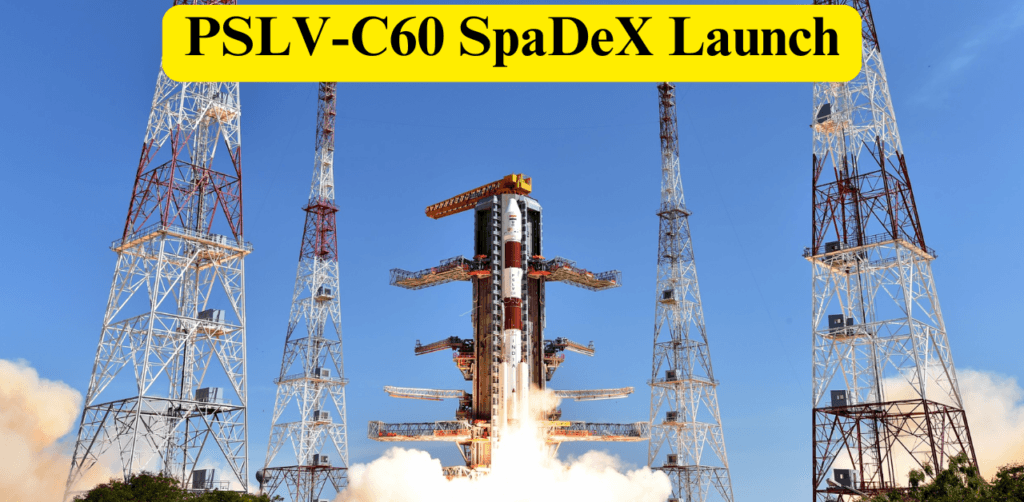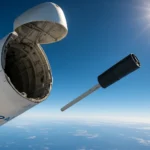
Table of Contents
PSLV-C60 SpaDeX Launch
PSLV-C60 SpaDeX Launch : ISRO PSLV-C60 SpaDeX mission launch today, 5 reasons why this space mission could prove to be a game changer for India. ISRO’s SpaDeX mission, which is scheduled to be launched on December 30, aims to demonstrate space docking technology with two satellites. The mission is crucial for future lunar projects and carries 24 payloads for various space experiments including crop growth studies in space environment.
ISRO’s SpaDeX mission is expected to prove to be a game changer for Indian space technology. (ISRO)
The Indian Space Research Organisation (ISRO) aims to achieve several goals with its Space Docking Experiment (SpaDeX), which is scheduled to be launched on Monday, December 30. One of them is to master the autonomous space docking technology.
This mission involves launching two specially designed satellites into space. Each weighs about 220 kg and will be launched into space using the workhorse Polar Satellite Launch Vehicle (PSLV) rocket from the Satish Dhawan Space Centre in Sriharikota, Andhra Pradesh. Here are five main reasons why ISRO’s year-end mission could prove to be a gamechanger for India.
Space docking technology
The completion of this mission will open the way for India to join the exclusive club of countries that have achieved specialised space undocking technology. Space docking expertise is only possessed by the United States, Russia and China.
The Spadex mission involves deploying two small satellites, SDX01 (chaser) and SDX02 (target), into a low circular orbit of the Earth at an altitude of 470 kilometres.
One of the main objectives of this mission is to demonstrate the technology of rendezvous, docking and undocking of these spacecraft.

Crucial for future lunar missions
Acquiring docking expertise will help ISRO to utilise crucial experience for future lunar missions like Chandrayaan-4.
“Furthermore, due to its small size and mass, Spadex is even more challenging, as the rendezvous and docking manoeuvres require greater precision than docking two larger spacecraft. This mission will be a precursor to autonomous docking required for future lunar missions like Chandrayaan-4 without GNSS support from Earth,” ISRO said in a statement.
Apart from testing India’s docking capability, the other objective of the mission is to send over twenty payloads into space. ISRO’s PSLV-C60 will carry twenty-four payloads as part of the PS4-Orbital Experiment Module (POEM-4). These payloads will be highly significant for ISRO’s space exploration programmes and experiments. ISRO has described the Spadex mission as a significant step in “paving the way for future missions involving astronauts, sample return and advanced space infrastructure”.
Boost to space startups The space mission will be a big step for India’s leading startups, which have been sending their payloads to space as part of their research and development systems. According to the Press Trust of India, the PSLV Orbital Experiment Module (POEM) will carry 24 experiments to demonstrate various technologies in space – 14 from various ISRO laboratories and 10 from private universities and start-ups.
Seed germination in space
The ISRO space programme, to be launched today, will also carry samples of spinach, cowpea and other crops to space to study their growth patterns in outer environment.
ISRO plans to grow eight cowpea seeds from seed germination and plant nutrition to two leaf stage in a closed box environment with active thermal control as part of the Compact Research Module for Orbital Plant Studies (CROPS) developed by Vikram Sarabhai Space Centre.
Conclusion:
The PSLV-C60 SpaDeX launch marks a significant milestone in India’s space exploration journey. As India continues to demonstrate its prowess in space technology, this mission is set to open new avenues for global collaborations, technological advancements, and economic growth. With its innovative approach and potential to address critical space challenges, the SpaDeX mission has the power to redefine India’s position in the global space race, making it a beacon of progress and scientific excellence.


